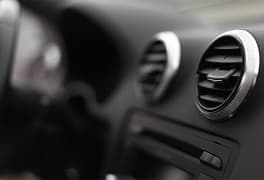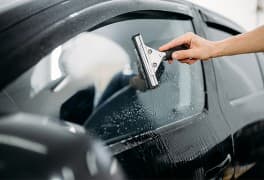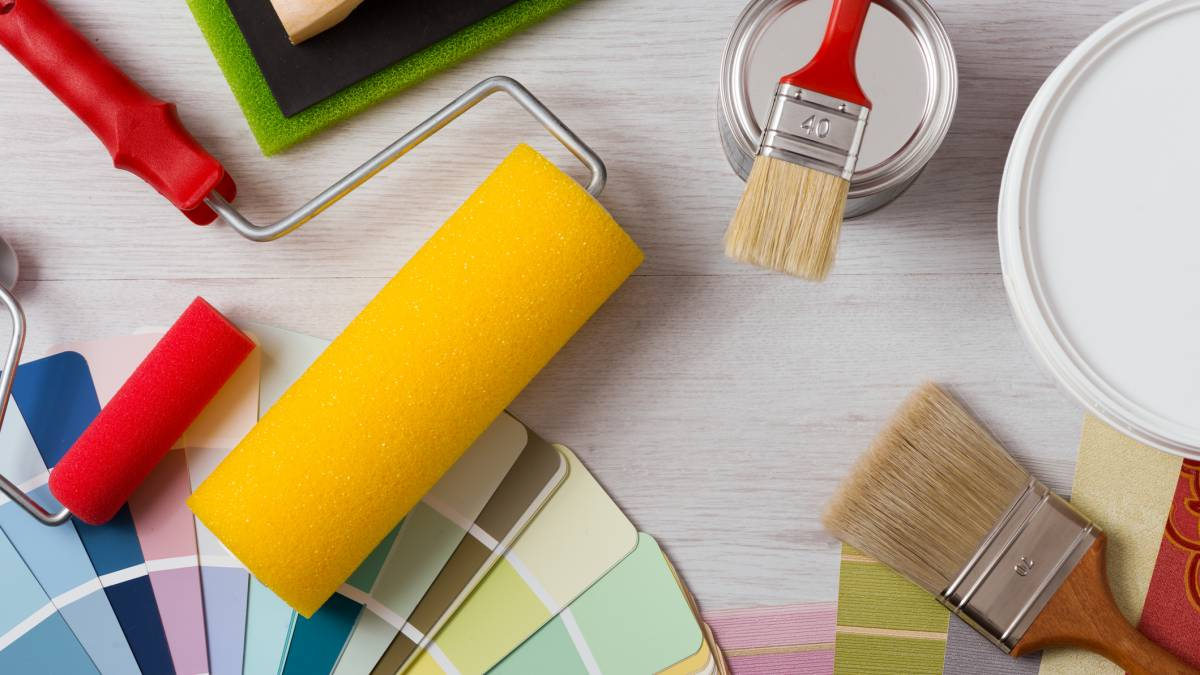
Find a local painter
- Inspiration /
- Indoor projects /
- Design & decor /
- Your ultimate painting...
Your ultimate painting checklist
Ready these essential tools and supplies for a stress-free DIY painting project.
DIY projects can be exciting and daunting at the same time. You know what helps? To have everything on hand before you get to cooking. Like how a good cook gets their grocery list and mise en place ready, you’ll need a helpful painting checklist before starting any paint project.
This guide will take you through all you need, from shopping for popular paint colours to getting the right primer and even getting supplies that’ll help accomplish clean-up in less time.
Painting checklist
The following sections will cover the tools you’ll need for every phase of your paint job. Don’t forget to bookmark or save this painting checklist PDF for easy access at the hardware store!
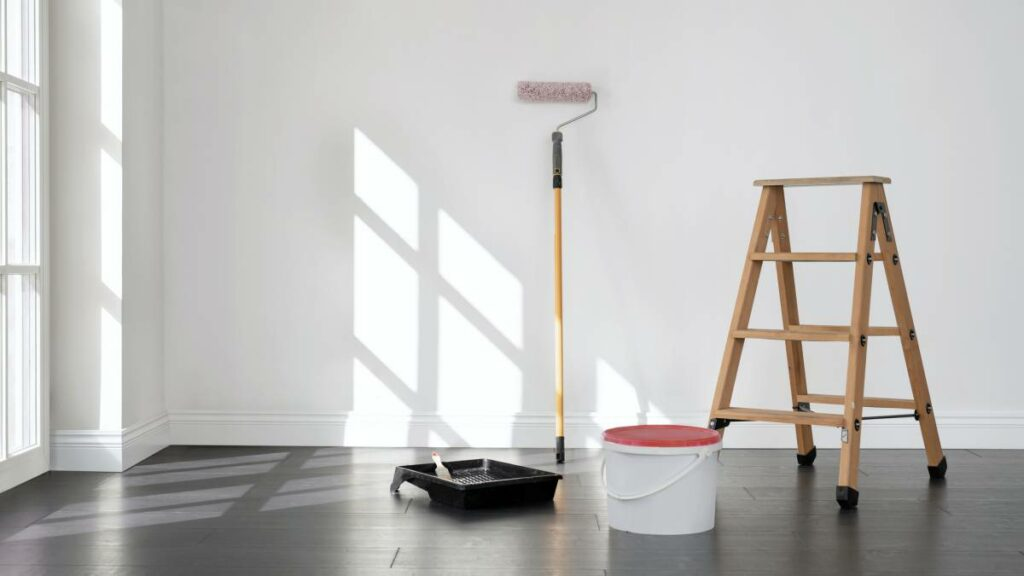
What you need before painting
Painting is hard work, which is why this painting prep checklist lists the supplies you’ll need to start with a little less stress.
Safety gear
Your painting materials checklist should include protective gear, such as gloves, protective eyeglasses, and a dust mask. This prevents dust and foreign particles from getting in your face, and the gloves keep your hands clear from solvents.
Screwdriver
It’s handy to keep a screwdriver on hand to loosen lighting or switch plates for a more thorough paint application.
Wire brush
Metal surfaces, especially those outdoors, may have lots of debris, rust, and flaking paint. A wire brush helps to scrape them off.
Mildew stain remover
Fix mouldy, mildew-filled surfaces with mildew stain remover before you start painting.
Sandpaper and/or electric sander
Sanding the wall makes the surface nice and smooth, helping the paint stick better and giving you a polished and pro-level finish.
Caulk, spackle, or wood filler
Patch any holes in the drywall before you let loose with a paint roller or paintbrush. The same goes for caulking around sinks, toilets, or windows.
Putty knife
Include this in your house painting checklist to apply the spackle or wood filler. If you’re re-caulking, you can also consider getting a caulking gun.
Drop cloths
Keep dust and paint from getting all over your furniture and knick-knacks using drop cloths. You can even get anti-slip drop cloths for ultra protection.
Ladder
You’ll need a ladder to reach the higher parts of your walls or your ceilings. If you’re uncomfortable with painting while on a ladder for any reason, you can always have a pro do the job for you instead.
Sponge and detergent solution or wall cleaner
These are a must for your interior painting checklist! After all the spackling and sanding are done, wash or wipe down your walls to make sure the paint adheres seamlessly to the surface.
Tape measure
You must measure the area to know how much paint you’ll need. A tape measure or yardstick comes in handy during this step.
Painter’s tape
Avoid stains, spills, and painting over edges with the help of painter’s tape. Make sure you secure the edges to protect areas you don’t want painted.
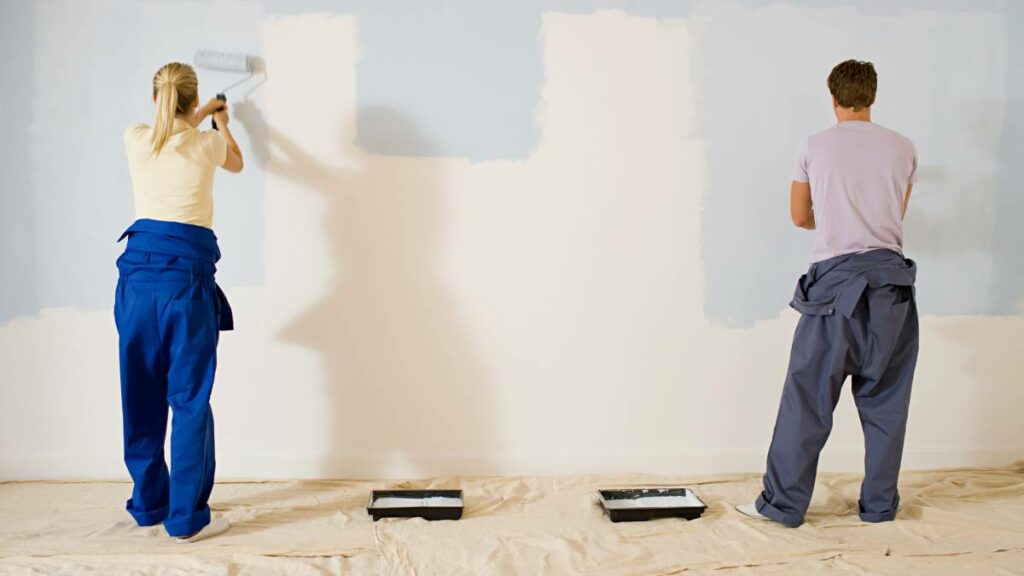
What you need during painting
Proper paint application plus some useful painting tips can help you get the most out of your money and effort in this DIY project.
Paintbrushes
You’ll want a mix of paintbrushes on hand, with different sizes and shapes. Each type serves a unique purpose. For instance, 2 to 3cm brushes are for detailed work, 5 to 6 cm brushes are best for railings, furniture, and shutters, while the 7 to 8 cm ones are for larger areas like siding, decks, and fences. Meanwhile, angled brushes can help you get straight edges while painting trim.
Paint rollers and roller covers
Paint rollers make it easier to fill large surfaces with paint. Get a quality paint roller so it won’t leave lint as you paint.
Paint pads
Some professional painters recommend using paint pads instead of rollers because they cause less splatter while still letting you cover more area quickly. Plus, they’re easier to use for painting along edges.
Extension pole
Prepare an extension pole if you plan on painting hard-to-reach areas. This is helpful if you’re painting the ceiling or want to paint the upper parts of your walls a different colour.
Roller tray or screen
Scrape off excess paint from your tools using a roller tray (if you’re using rollers) or a screen (if you’re using brushes or pads).
Primer
Priming helps paint adhere better to the surface, plus it hides wood grain, knots, joints, and bleed from old coats of paint. Water-based primer is more recommended since it tends to have fewer VOCs (volatile organic compounds).
Paints
Get the right kind of paint for your project. Look for the ideal paint finishes for interior and exterior painting jobs, and get enough for the space you want to paint. Painting your living room soon? Get inspired by checking out this two-colour living room guide.
Pouring spout
Prevent spills on floors by adding a pouring spout to your painting checklist.
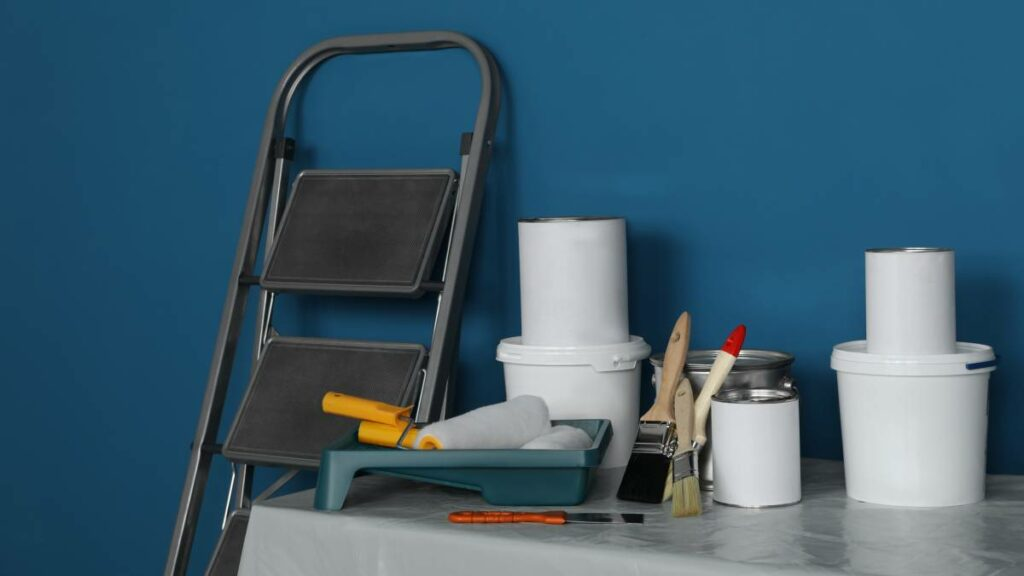
What you need for clean-up after painting
Yes, you should be thinking about clean-up even before beginning your next project! Here’s what to get:
Buckets
Get a couple of gallon buckets for cleaning up brushes, rollers, and pads, rinsing rags, and collecting all the bits and bobs you’ve accumulated in your painting area.
Towels and rags
You’ll need to do some wiping after your paint job, so putting out some towels and old rags would be wise.
Paint scrapers/blades
Get rid of unsightly paint bleed easily using a paint scraper or blade.
Things to remember when painting by yourself
- Every space or surface needs to be prepped before painting. Wipe and sand it down, do necessary repairs, and start with a clean surface.
- Never skip the primer. Maximise your time, effort, and money by priming the surface properly.
- Don’t just take a brush to a surface and call it a day. Different areas and materials require a proper painting approach. Look up guides like how to properly paint a door, repaint walls, and work with tricky areas like trim and door frames.
- Invest in quality paintbrushes or tools. Chances are you’ll have these tools for a long time, and you’ll know that good brushes make all the difference in achieving a professional look when you’re doing it by yourself. Of course, that’s on top of having basic painting knowledge.
- Paint in the right conditions and with good ventilation. The best time to paint is when the weather isn’t too dry or too hot. Painting in rainy or humid conditions may slow down the drying time of the paint.
Prevent paint jobs from going wrong by having a painting checklist!
House painting involves a lot more than just a brush and some paint. This supply checklist was designed to help you have fun, save money, and enjoy the fresh coat of paint you just applied.
And while DIY projects can be incredibly fulfilling, there’s no shame in calling in the pros to help out. Hiring a professional house painter to get the paint job done quickly and efficiently would be a smart move.
FAQs on painting
In what order do you paint your interior?
If you’re repainting the entire room, start with your ceiling, followed by the walls. Then, work on the doorway trims, window sashes, and finally the flooring.
What do you need to know before painting?
Before painting, it’s crucial to understand the type of surface you’re painting, choose the right paint and tools, prepare the area, and paint in the right weather conditions. Don’t forget to protect floors and furniture. Proper planning and having a painting materials checklist ensure you have everything you need for a successful paint job.
How do professionals paint interiors?
Usually, they’ll start by preparing the surfaces – this can include taping up trim, removing stains, and stripping light fixtures and outlet covers. Then, they’ll apply primer, followed by paint. Consider hiring a professional house painter near you to get your paint job done quickly and efficiently.
Do I need to prime before painting?
Yes, you need to apply primer before painting. Primer helps paint stick to the surface better. It also helps cover up unevenness in surfaces like wood grain. Your paint will show up better if you have a coat of primer underneath.
How much will your job cost?
The Oneflare Cost Guide Centre is your one-stop shop to help you set your budget; from smaller tasks to larger projects.


